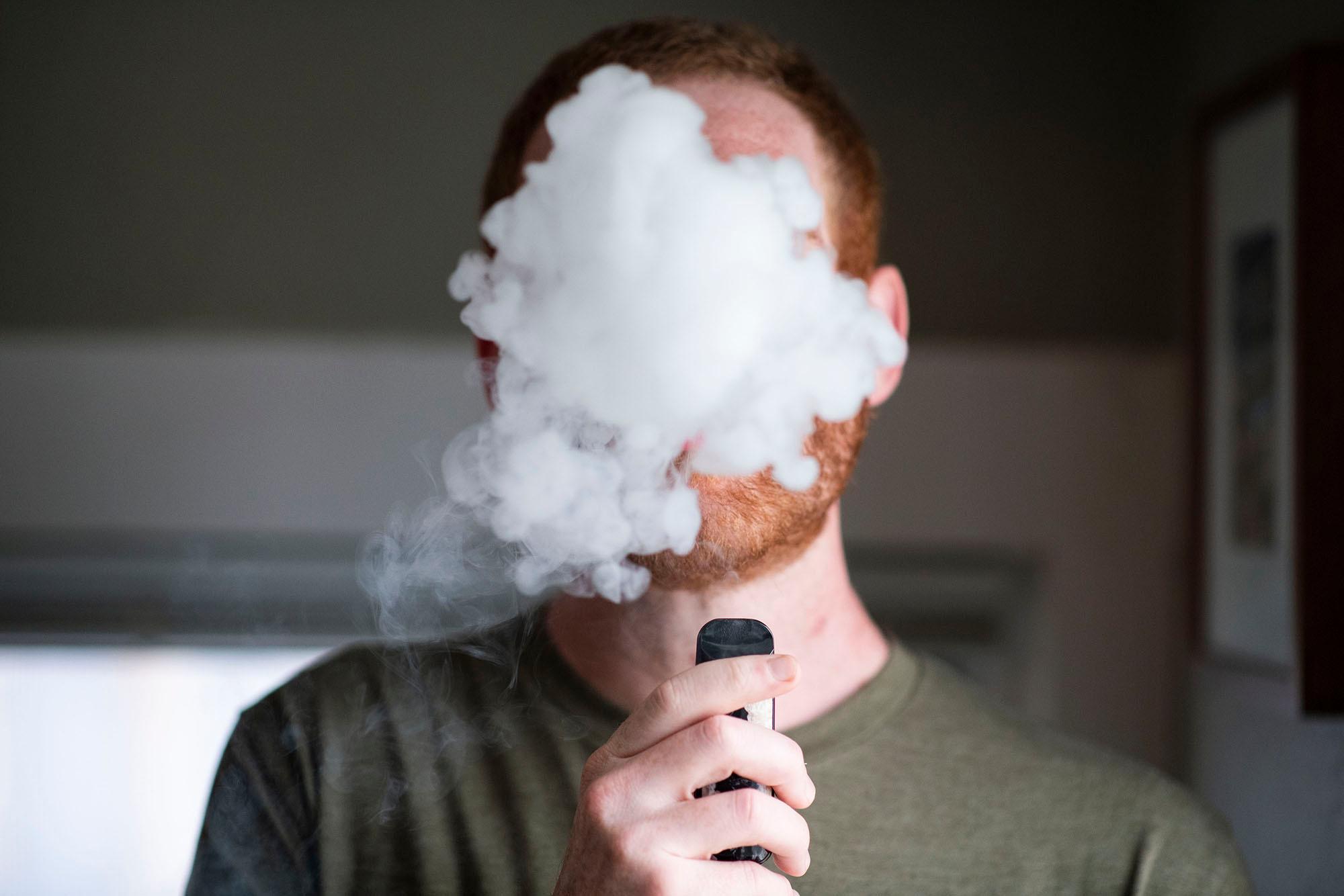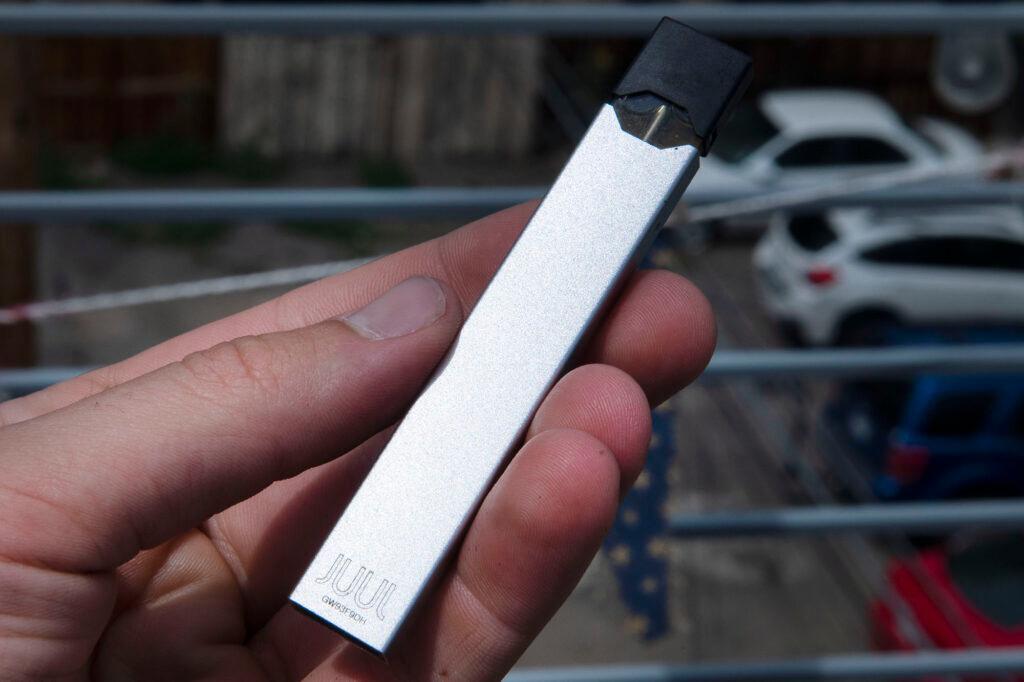
In the before times, pre-COVID-19, teen vaping and an outbreak of serious vaping-related lung illness looked something like Public Health Enemy No. 1.
It was all over the news and the U.S. Surgeon General officially declared e-cigarettes an epidemic with young Americans.
Teens in droves were consuming nicotine via cheap, sleek, discrete devices like JUULs, or more recently, disposables, like the brand Puff Bar, and Zyn nicotine pouches. A new biennial survey finds that roughly one in four Colorado teens vape currently, at least once in the prior month. That’s no surprise to 17-year-old Alden Burt.
“Well, it's pretty jarring. Pretty much everybody I know and hang out with vapes, or is addicted to nicotine,” said Burt, a rising senior at Gunnison High, a school of about 400 students.
He tried vaping for the first time during the summer before ninth grade, right around when vaping took off in Colorado. Burt remembers walking around town with friends, experimenting with a vape pen.
“We weren't vaping to vape. We were vaping to buzz, you know, for the nicotine,” Burt said.
He and his friends developed a steady habit, like many of his classmates, even though he worries about the risks to his mental and physical health.
“I mean you can do it literally anywhere,” Burt said. “There's no smell and it's a lot of nicotine, straight into your brain whenever you want it.”

'A lot of kids are just kind of sad'
A new comprehensive statewide survey finds Burt shares that in common with a lot of teens. The number of Colorado teens who perceived vaping as risky shot up to more than seven in 10. Among students who used electronic vape products in the past 30 days, more than 50 percent said they'd tried to quit in the past year.
Burt said national news of lung illnesses hasn’t seemed to change behavior. He thinks that’s because many teens rely on vaping to self-medicate and aren’t that worried about the risks.
“A lot of kids are just kind of sad. With high school you get really stressed out, having a vape on you it's a weird stress reliever that a lot of kids choose, I guess,” he said. “Cause it's the easiest thing there that you can rebel and have and feel like you satisfy your teenage angst.”
The survey, along with other research, also finds that many teens have experiences like Burt: vaping often starts in middle school and use grows through high school, and it often leads to smoking conventional cigarettes.
He described vaping as being much more prominent in leading to the use of other substances.
“Nicotine is the gateway drug,” he said, adding that in his middle school there was no discussion of vape products containing nicotine, unlike the lessons about cigarettes. “It's so ingrained in us that nicotine is bad and cigarettes are bad, but they never talked about vaping.”
Teen vaping often begins in middle school
The last time the survey was done two years ago, Colorado ranked No. 1 for teen vaping among more than three dozen states surveyed. The trend has fired up many parents statewide, like Alden’s mother Mary.
“It's so common that the school's principal literally had to remove the doors from the bathroom to prevent students from vaping in there,” she said about her son’s high school. “It started in middle school really, before I realized it was even an issue.”
The survey confirms the trend, finding 11 percent of eighth-graders currently vape regularly, that figure grows to a third of high school seniors.
Regular vaping seems to be more common amongst whites (26.5 percent) and Hispanics (27.2 percent) and those listed as multiple races (26.1 percent). The numbers are lower for Blacks (16.2 percent) and Asians (14.1 percent).
Other groups also report high numbers, including American Indian (33 percent) and Hawaiian (35.5 percent), but due to the smaller sample size, that data is considered less reliable.
Another area that stands out in the new survey is a sharp spike in use among high schoolers of highly potent marijuana products via dabs and vapes. Dabbing is a way of inhaling highly concentrated THC.
More than half who said they use pot said that they dab it. Among those who said they used it in the prior 30 days, 52 percent said they dabbed it, up from 34 percent two years ago.
The data also recorded a nearly 70 percent increase in students vaping marijuana since 2017. Among high school students who used marijuana in the past 30 days, the numbers increased from 20 percent to 34 percent.

Fighting back against JUUL and for stronger laws
Mary Burt wrote a letter to the local paper calling on Gunnison County to join a lawsuit against big vape company JUUL, accusing it of targeting kids with tasty flavors and deceptive marketing, something the company denies.
She got a swift response from a slew of other parents, “who said, ‘thank you. We are going through the exact same thing. Had no idea you were going through this. This is scary. We need to do something.’”
JUUL has repeatedly maintained it doesn’t target teens.
“We will continue to reset the vapor category in the U.S. and seek to earn the trust of society,” by working with public officials and other stakeholders “to combat underage use and transition adult smokers from combustible cigarettes,” said JUUL spokesman Ted Kwong via email.
The company insists its “customer base is the world’s 1 billion adult smokers.”
Puff Bar and Zyn didn’t respond to an email request for comment.
Advocates like Jake Williams with Healthier Colorado say weak laws paved the way to this crisis.
“To date, it's been pretty much the Wild West when it comes to selling these products and kids have walked through that open door,” he said.
Policymakers have recently launched a slate of reforms, including raising the legal age to purchase tobacco to 21 and a statewide tobacco licensure law. Grier Bailey heads a group representing 2000 convenience stores. He said those laws don’t address the main way teens get vape devices: social sales, older youth buying for younger.
“I mean, it’s a lot like alcohol, right? There’s not a bunch of 16 and 17-year-olds walking into liquor stores and buying alcohol, they get it from social sources,” said Bailey, the executive director of the Colorado Wyoming Petroleum Marketers Association. “We're not perfect, just like the liquor stores aren't perfect. But the vast majority of kids aren't getting it from us.”
Colorado lawmakers hope other measures will have an impact. They sent a measure to the fall ballot to impose taxes on vaping products, and raise the state’s tobacco tax.
State Rep. Yadira Caraveo, a pediatrician, said the goal is to fund quit programs and discourage kids from buying vape products. Since e-cigarettes came out, “we've seen an increase in nicotine use overall and especially in young people. And so the point of this is to make a group that is price sensitive less prone to using these products.”
Public health agencies and policymakers have moved to fight teen vaping on a variety of fronts. The state health department launched a public education campaign and website, TobaccoFreeCo.org, with free materials and tips.
Congress also raised the legal purchase age of tobacco to 21 last year, following the lead of state and local governments, including twenty-two in Colorado. Colorado’s Tobacco 21 law became effective in July.
'Creating disincentives' across Colorado and locally
In the last session, state lawmakers passed a law, with bipartisan backing, to set up a new statewide licensing program for tobacco retailers.
“As a state, we have to do better by our kids,” said House Speaker KC Becker, a Democrat, and mother of a middle schooler. “There's no reason that we cannot regulate tobacco in a better manner that leads to better health outcomes.”
“We're creating disincentives,” with local and state reforms, said Don Daniels, an educator teaching tobacco prevention at Chatfield High School in Littleton. "And if you make it more difficult for kids to start (consuming nicotine), that's a good thing.”
Last month, Colorado Attorney General Phil Weiser announced the state will sue JUUL over what he said were efforts by the company to use deceptive marketing to target minors. The company denies those claims.
A bill to ban tobacco flavors, considered by public health advocates a key driver in luring teens initiation, failed. Vape shops were among those opposed. The measure promised to “just kill businesses across the state,” said Amanda Wheeler, a vape shop owner with the Rocky Mountain Smoke Free Alliance, a trade group.
Back in Gunnison, Alden Burt, a budding singer-songwriter, strums his guitar. His relationship with vaping changed dramatically this spring. When the pandemic hit, he was quarantined at home, away from his friends. He stopped vaping and hasn’t touched it in months.
“I'm not sure where that will head when things get back to normal, but we'll see. I don't want to continue and I don't think I will in the long run, but I am still in high school, you know, and it's, it's there.”
The break has worked for Burt. He just recorded his first album, called Chapter One — but he has deep concerns about his generation’s fascination with, and for many, addiction to, vaping. It’s a trend that in Colorado at least is showing no signs of dissipating.









